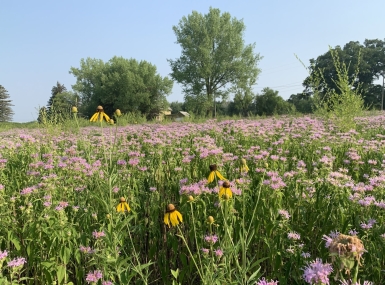EPA announces first lab method to test for PFAS in different environmental media
Upcoming Events
Related News

Key Takeaways
On September 2, the EPA announced the first validated laboratory analytical method to test for 40 PFAS compounds in eight different environmental media: wastewater, surface water, groundwater, soil, biosolids, sediment, landfill leachate, and fish tissue. The draft method, developed in conjunction with the U.S. Department of Defense (DOD), can be used in National Pollutant Discharge Elimination System (NPDES) Permit applications. Although the method is not required for Clean Water Act (CWA) compliance monitoring, EPA has now recommended its use in individual permits.
PFAS refers to an entire class of approximately 600 per- and polyfluoroalkyl substances in commerce, of which perfluorooctane sulfonate (PFOS) and perfluorooctanoic acid (PFOA) were historically the most widely used throughout the United States. These chemicals have been found in people, the environment, wildlife and fish all over the world; do not break down easily in the environment; might affect people’s health and are the subject of increasing regulation worldwide. The draft method complements existing methods to test for PFAS compounds in drinking water and non-potable water.
On September 8, the Environment, Energy and Land Use Policy Steering Committee heard from Rob Bilott, Parter at Taft Law, and Congresswoman Debbie Dingell (D-Mich.) on the health and environmental impacts of PFAS. As owners, users and regulators of water resources, counties are directly impacted by new regulatory standards to address PFAS contamination. Counties support efforts by EPA and other federal agencies to study the health and environmental impacts of PFAS compounds. Additionally, as the administration moves toward regulatory action, counties urge the administration to work closely with state and local governments throughout the rulemaking process.
Advocacy
EPA announces decision to set regulatory drinking water standards for PFAS
EPA announced it will propose regulatory drinking water standards for two toxic chemicals known as PFAS

Related News

U.S. Department of Energy announces $18 million for Local Government Energy Program
U.S. Department of Energy announces $18 million for Local Government Energy Program

Sherburne County and tribal nations collaborate on county park
Sherburne County, Minn. engaged tribal nations to revise its plans for a park that included a Native American burial ground.

U.S. Army Corps of Engineers publishes memo on protection of non-jurisdictional waters and wetlands
U.S. Army Corps of Engineers memo directs civil works actions on water and wetlands in response to recent Waters of the United States (WOTUS) changes.